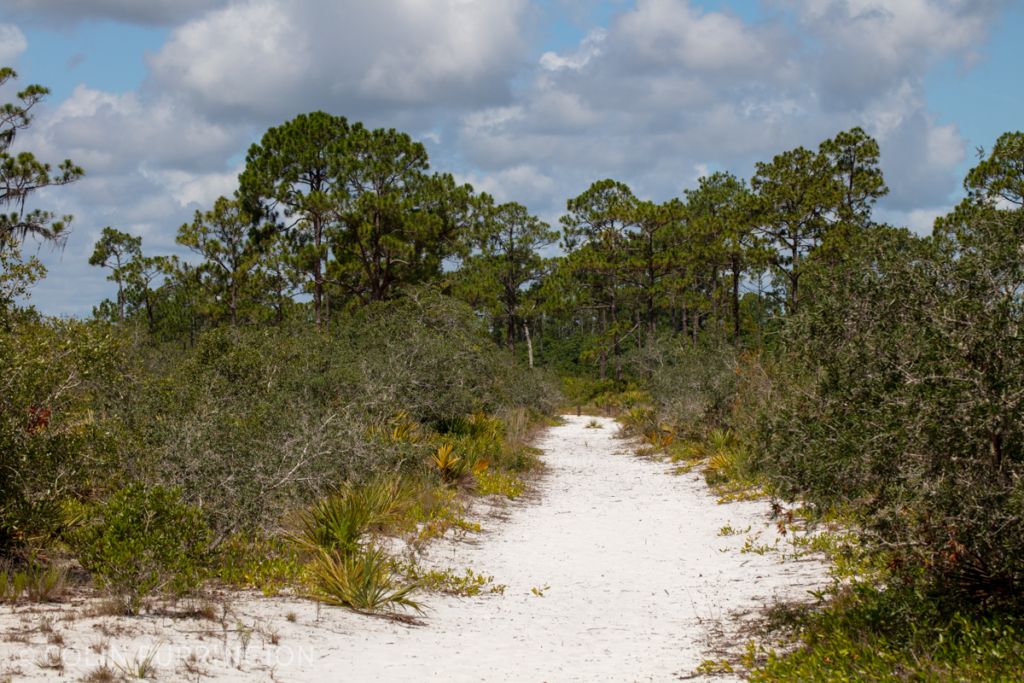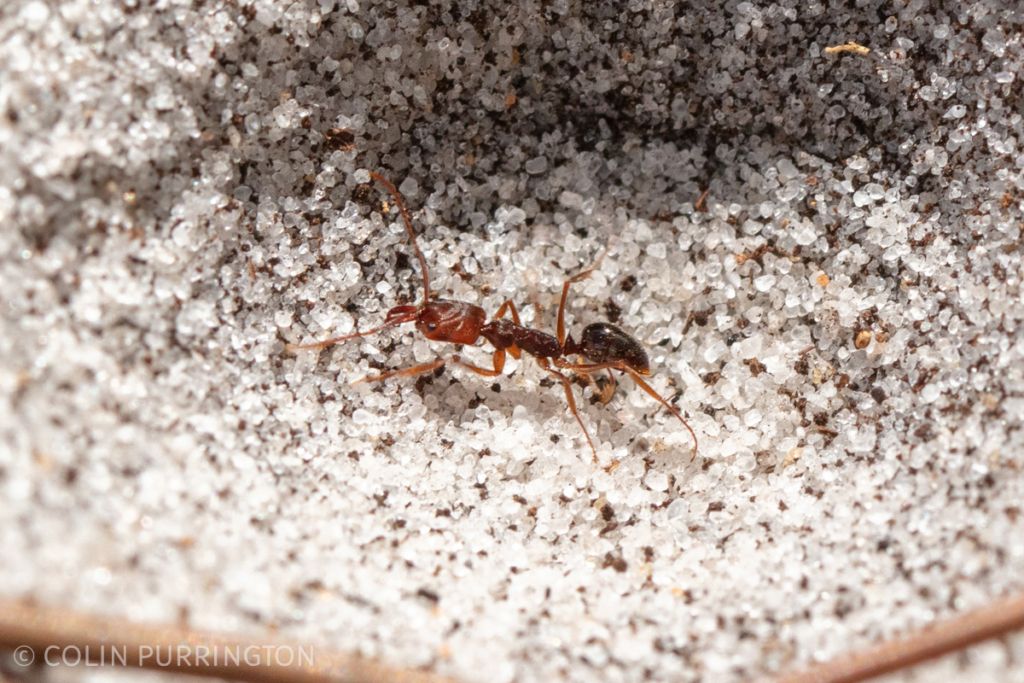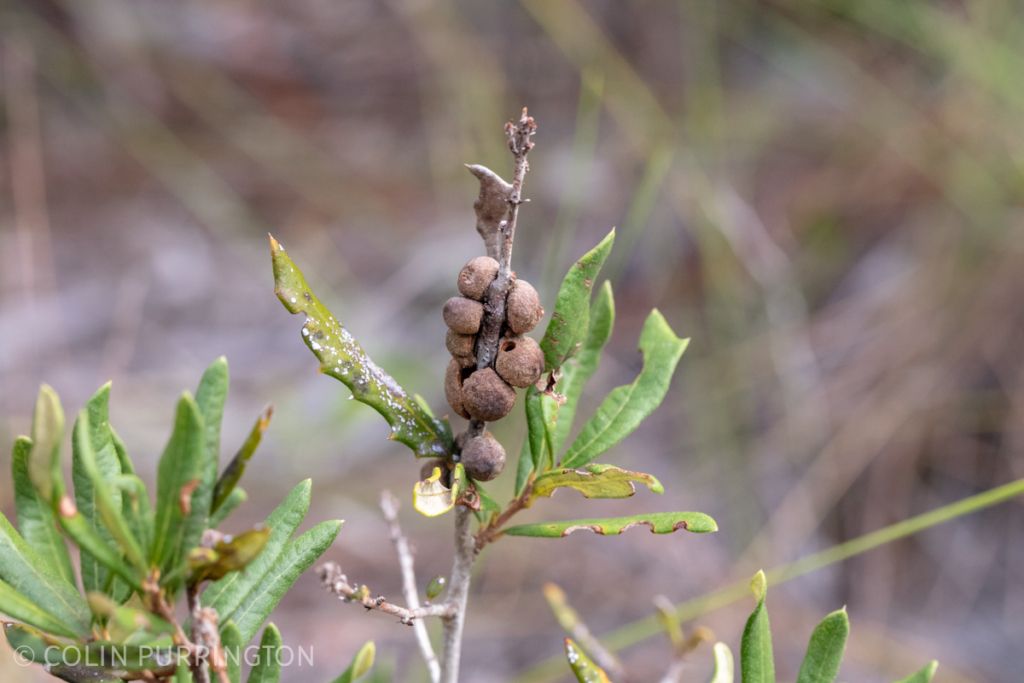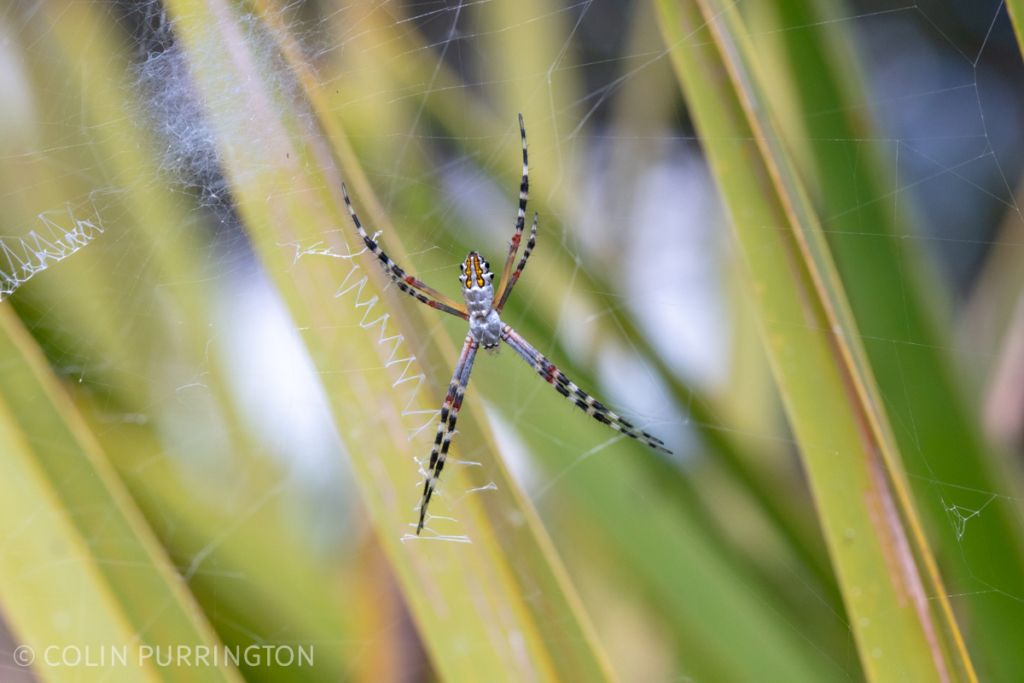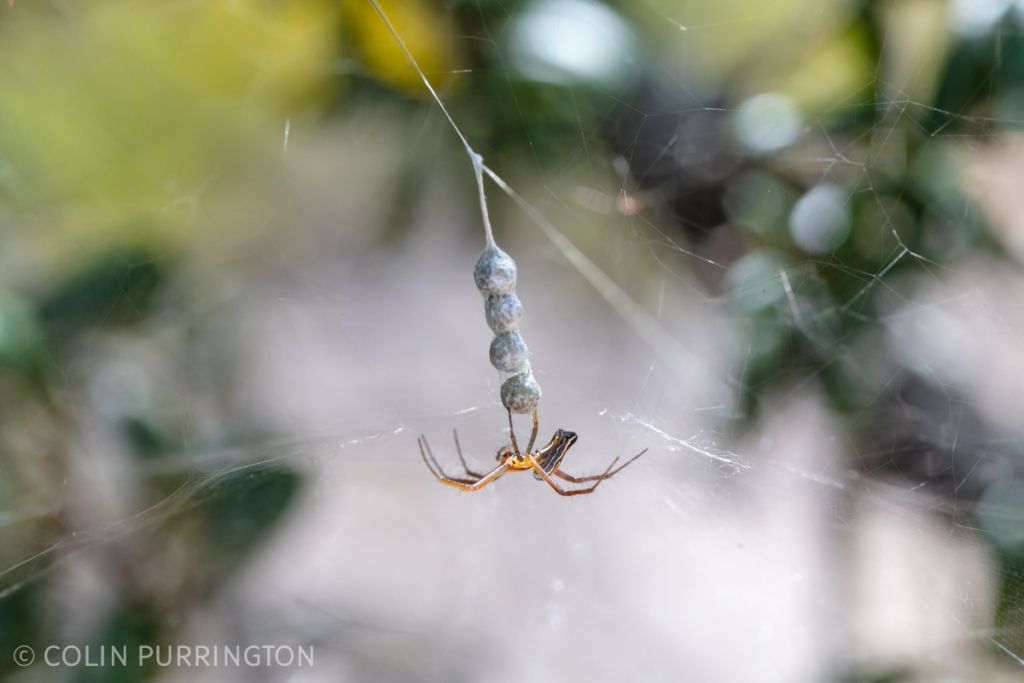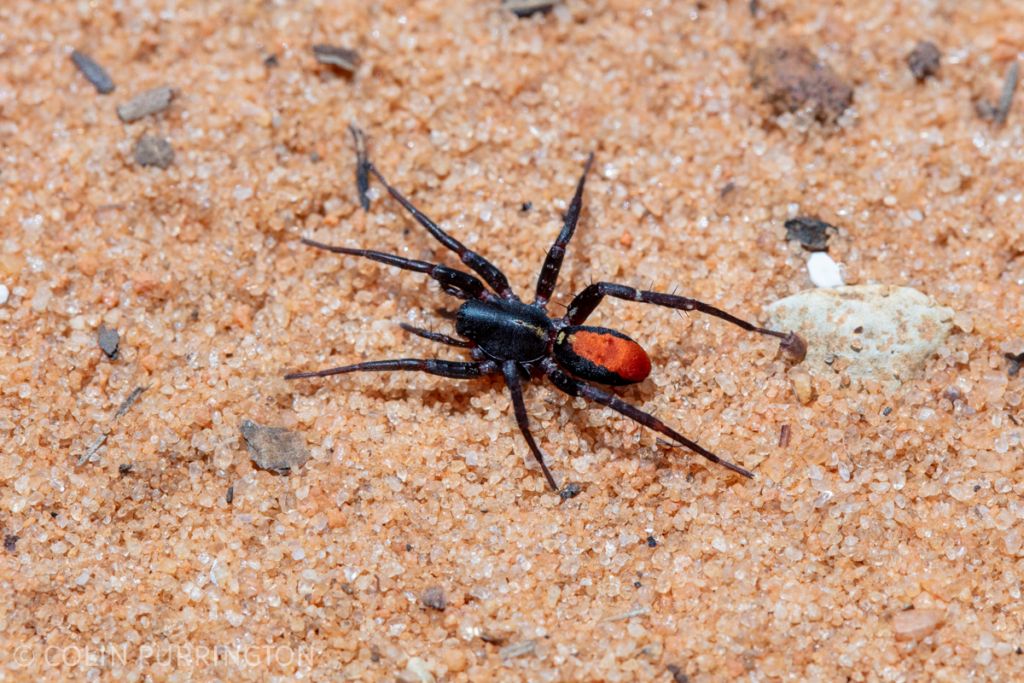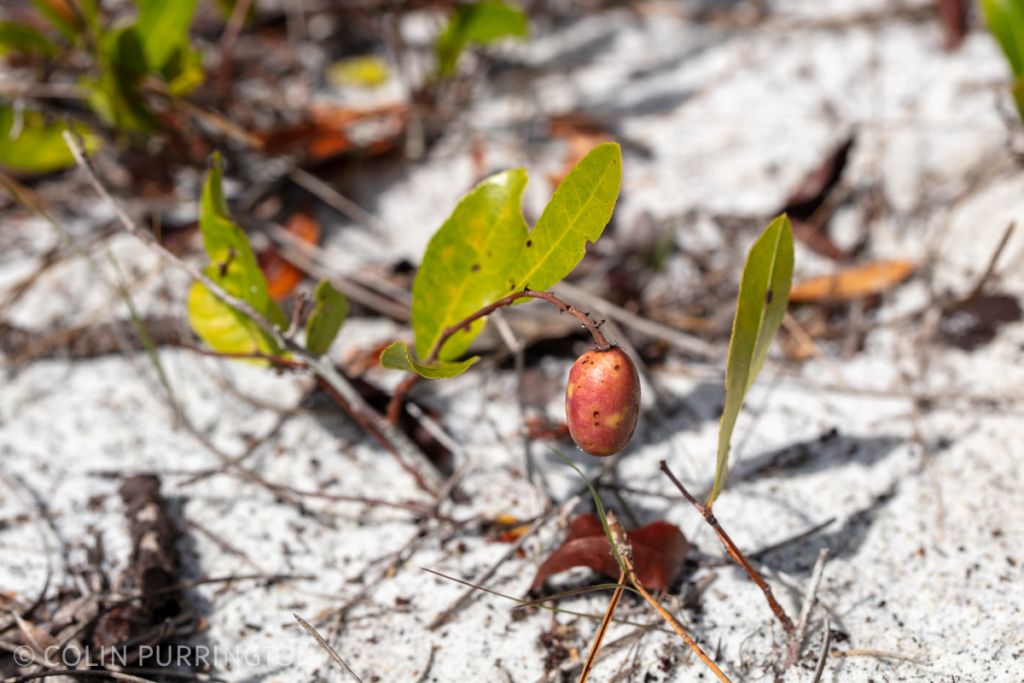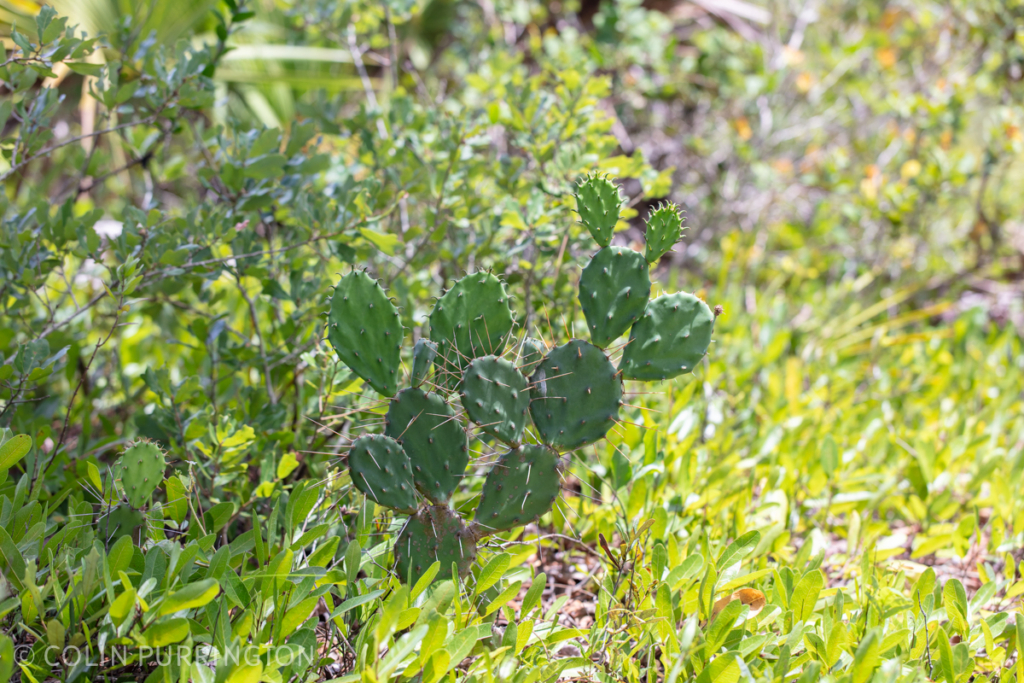Photographs from a week in Zolfo Springs, Florida. In case you’re wondering, the namesake spring was capped with concrete in 1960s, and the large pool it fed has been filled with dirt. But still plenty of nature to photograph.

Cuban tree frog (Osteopilus septentrionalis). Apparently arrived in Key West in 1931 or earlier. They eat each other as well as any of the native tree frogs, which is likely why native tree frogs are becoming so rare in the area. Reported to take up residence in bird boxes, too, which is thought to annoy birds and result in their declines. Also fond of hiding in boxes that house electrical components, which doesn’t end well. And they clog toilets. I could go on. All considered, a really awful species for Florida. And it’s spreading to other states.

Juvenile Cuban tree frog (Osteopilus septentrionalis) resting on a lemongrass leaf. Yes, cute, but don’t be fooled.
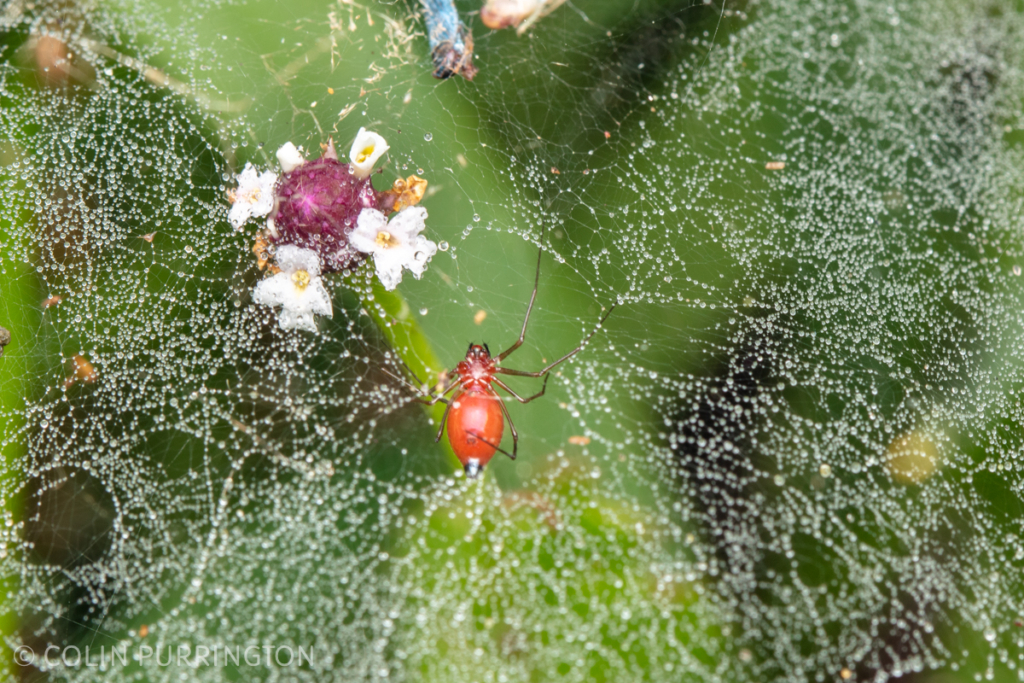
Black-tailed red sheetweb spider (Florinda coccinea) with morning dew. I wonder whether the red color evolved to lure prey, perhaps mimicking a fruit or flower. Would be interesting to compare capture data with similar sheetweavers that have black bodies.
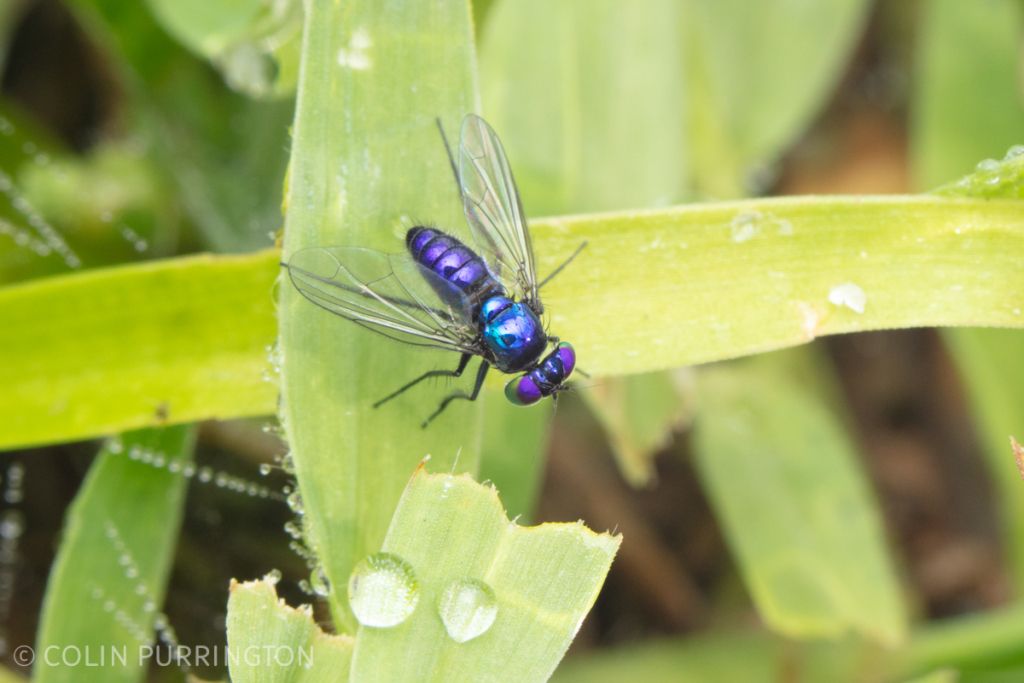
A male Condylostylus mundus. Longlegged flies (Dolichopodidae) are hard to photograph and ID, but I got lucky here. There just aren’t that many that are blue and chunky like this. Females of this species are green.
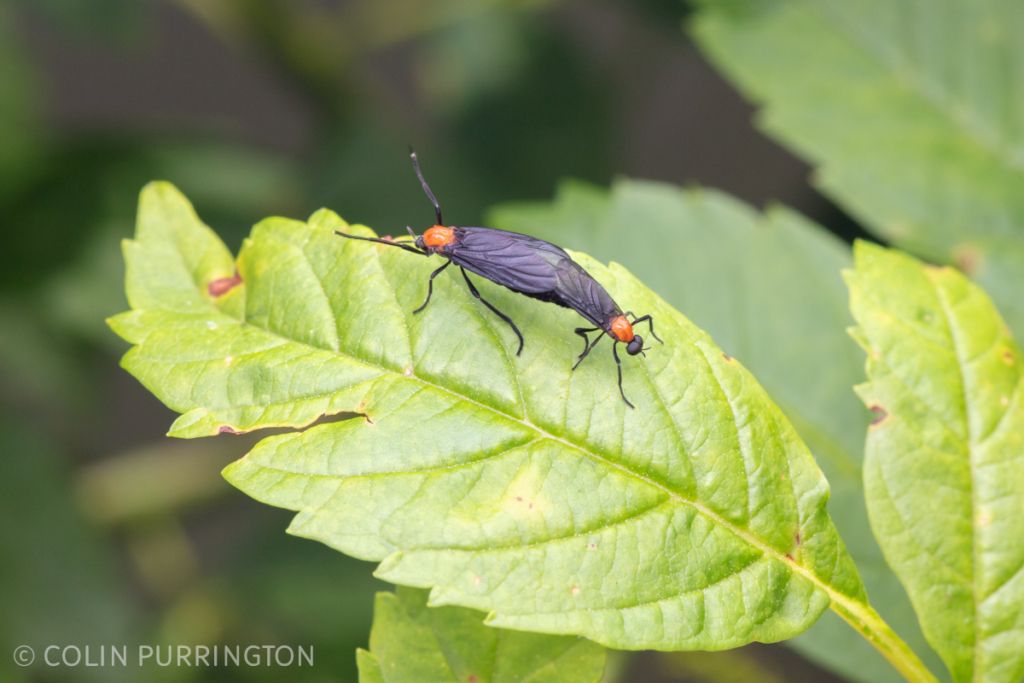
Copulating pair of common lovebugs (Plecia nearctica). Probably the most photographed fly on the planet. So definitely had to take one more. In addition to mating, they are fond of hanging out in large numbers on freshly painted surfaces. I have no idea why.

Possibly Geranomyia virescens, a crane fly. The long proboscis is for drinking nectar, not sucking blood. It’s just a harmless pollinator.

Black stink bug (Proxys punctulatus). Here’s the BugGuide info page. The University of Florida has a very nice description of the species, too. Like many insects it’s gone through a half-dozen different Latin names, which makes it hard to locate interesting natural history tidbits that are often only available in old books and journals.
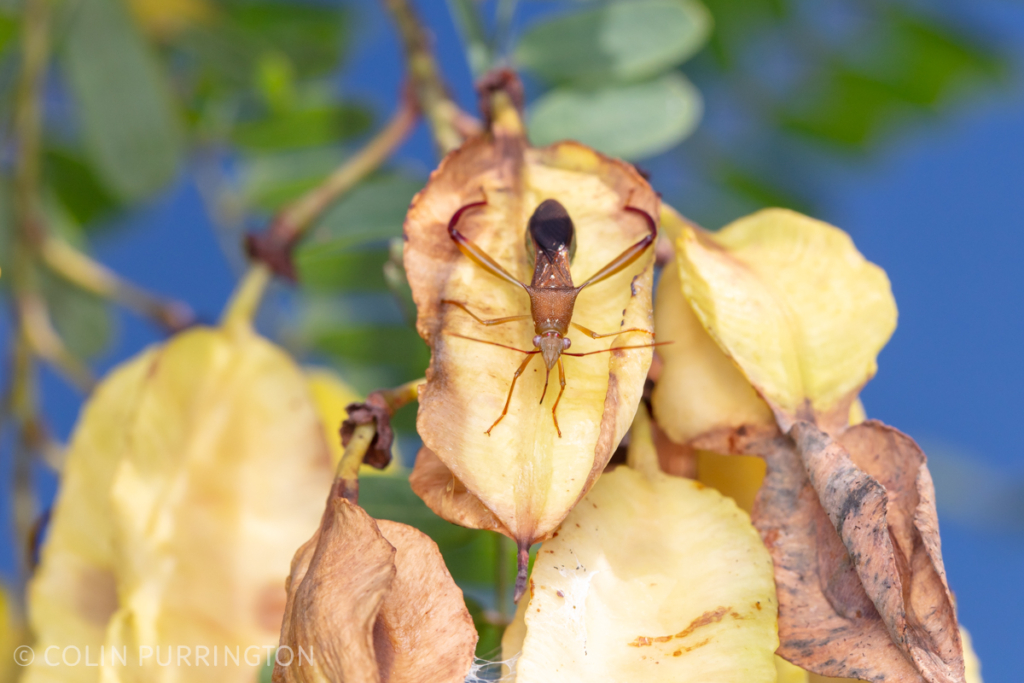
Hyalymenus sp. feeding on a scarlet sesbane (Sesbania punicea) pod. BugGuide says there are three species in Florida but offers no help in distinguishing them. Per some experts it could be the case that all three species are variants of a single species. If you know the answer, please leave a comment on the post or go directly to one of the iNaturalist observations I’ve made.

Yellow ants (Monomorium floricola) on a cow tooth. This species likes to nest in arboreal cavities so this is a fitting location. If you’d like to see closeups, antwiki has them.
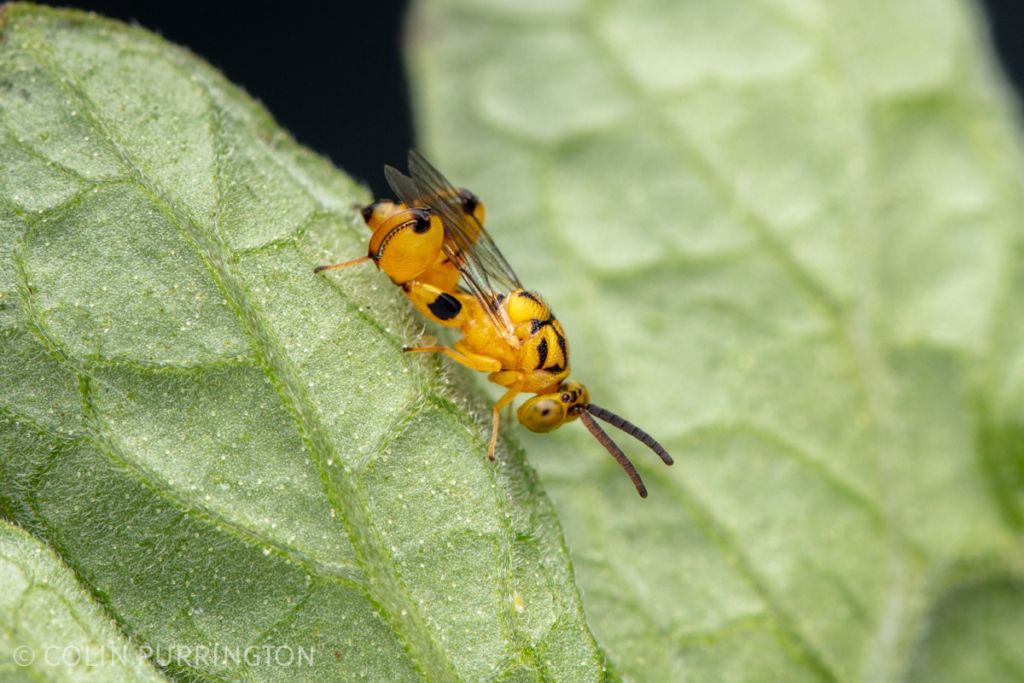
Conura sp. (Chalcididae) on tomato leaf. I have no idea which species. And there are a lot in Florida.

Chelonus sp. They’d land for approximately 1 second, then launch themselves for more hovering. So super hard to get a decent photograph. An odd-looking wasp because the abdomen is almost completely smooth due to fused tergites. Using wing venation alone this appears to be Chelonus kellieae (per figure in Marsh 1979), but that’s a species from Costa Rica and I’m not sure it’s in the United States. But I bet it is; its primary host, the potato tube moth (Phthorimaea operculella), is found in Florida. There were thousands of these wasps hovering over the lawn in the morning, so they are certainly eating something that’s in great abundance. They are egg-larval parasitoids (the egg is deposited into the host egg but doesn’t kill the host at that point).
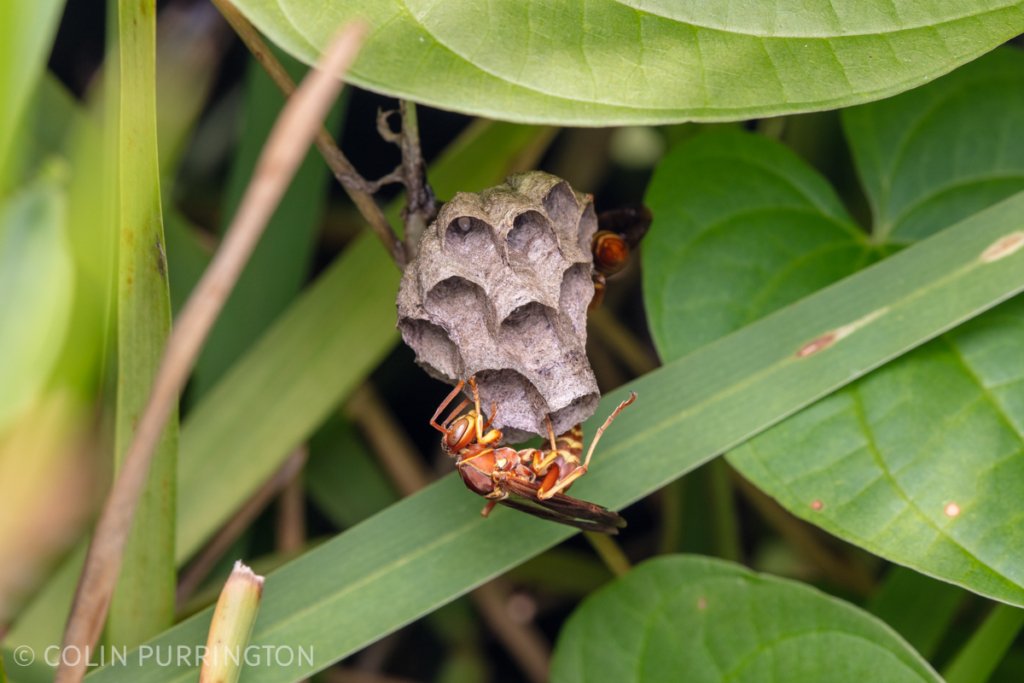
Polistes bellicosus nest. You can see an egg in the top left cell. They were not happy with me being so close. It was mutual.
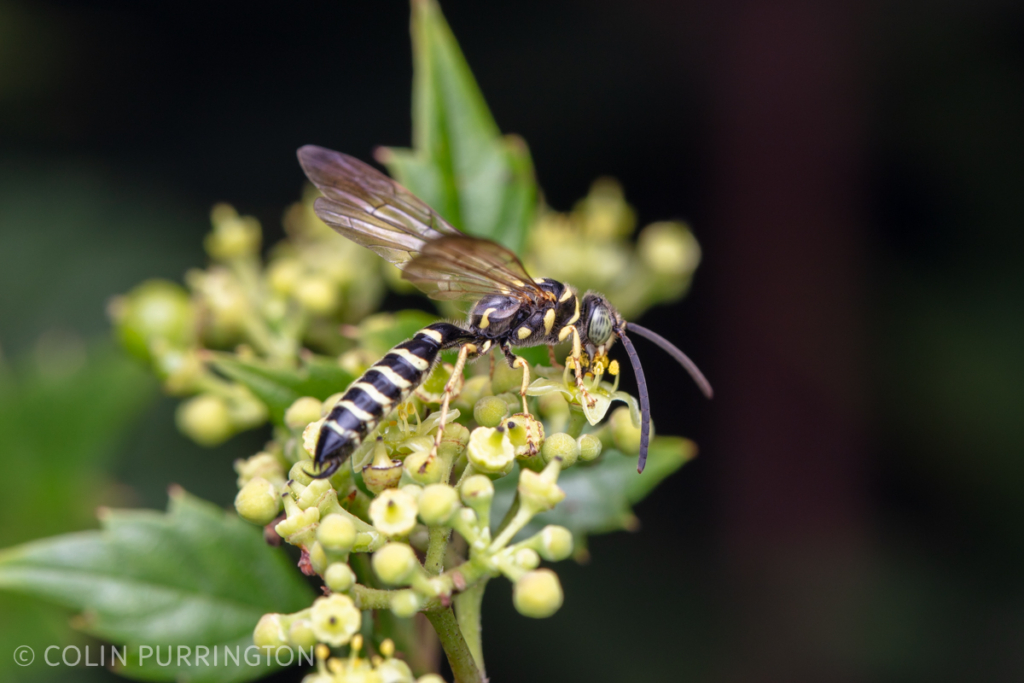
New World banded Thynnid wasp (Myzinum sp.). I think this is Myzinum maculatum because it has clear wings with brown tips; plus coloration and banding matches that of individuals ID’d as such (e.g.). Also, one source says the species has a cleft front claw (figure 7), and I think that’s the case here. You can tell this is a male by the curved pseudostinger at tip of abdomen. The larvae are parasitoids of scarab beetle larvae.
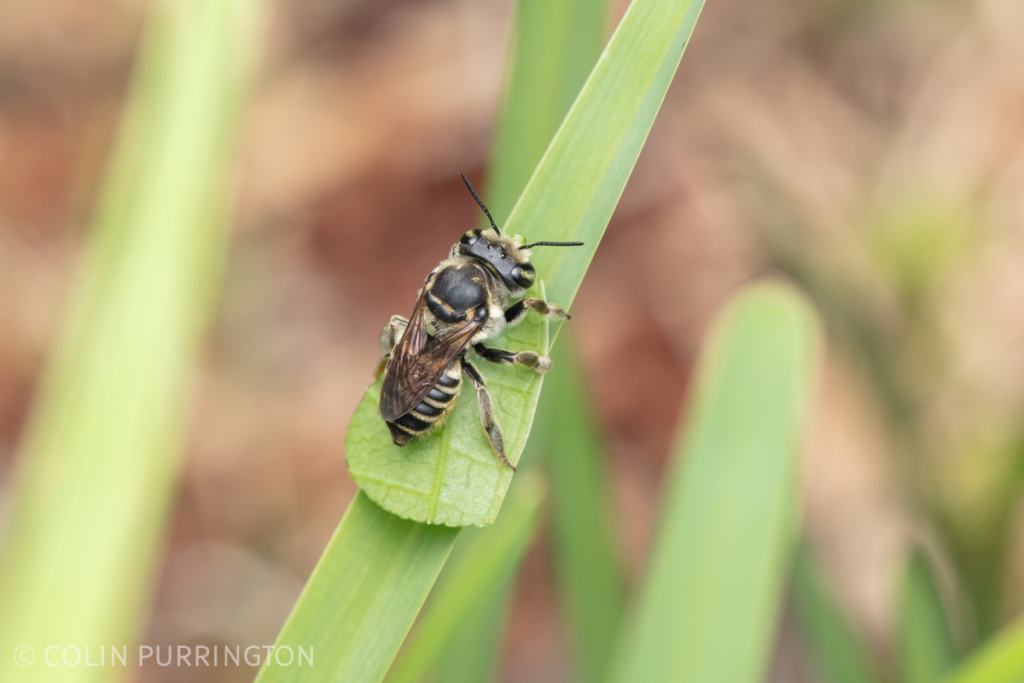
White-footed leafcutter bee (Megachile albitarsis) resting with a section of leaf cut out of air potato (Dioscorea bulbifera). It’s one of thousands of species described by Ezra Townsend Cresson, a guy now long dead but who lived five blocks from me in Swarthmore, PA. I’ve even been to his garden several times.
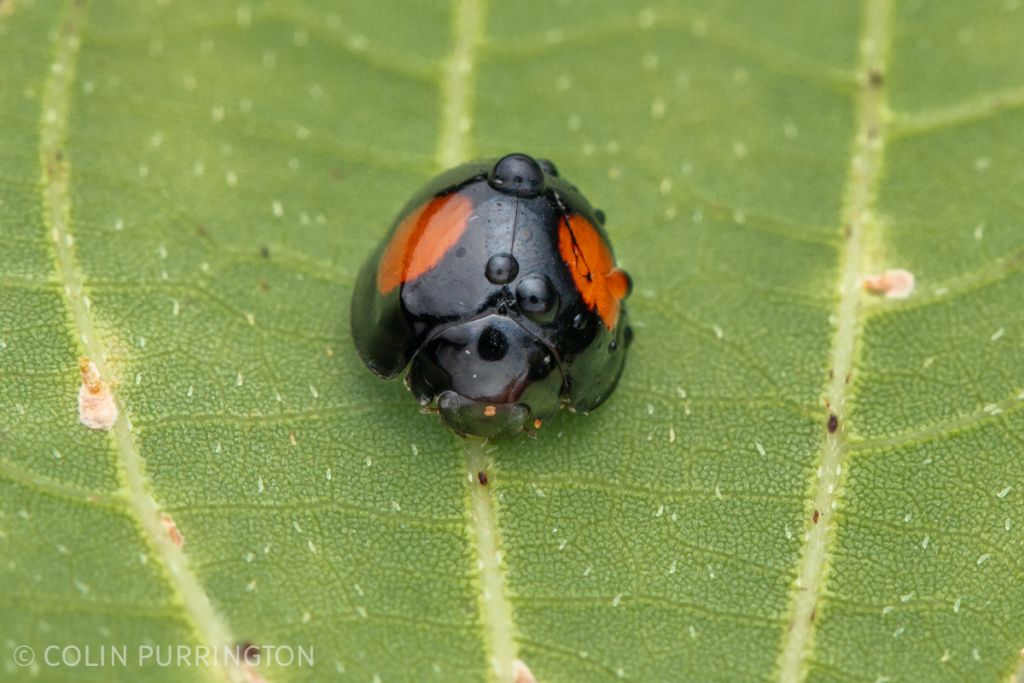
Twice-stabbed lady beetle (Chilocorus sp.). Given size of spots I’m wondering whether this might be a cactus lady beetle (Chilocorus cacti). But Chilocorus stigma is super common in Florida and is said to have larger spots in the south, so I’m unsure. I should have taken a photograph of the ventral side. One of life’s regrets. They eat scale insects.
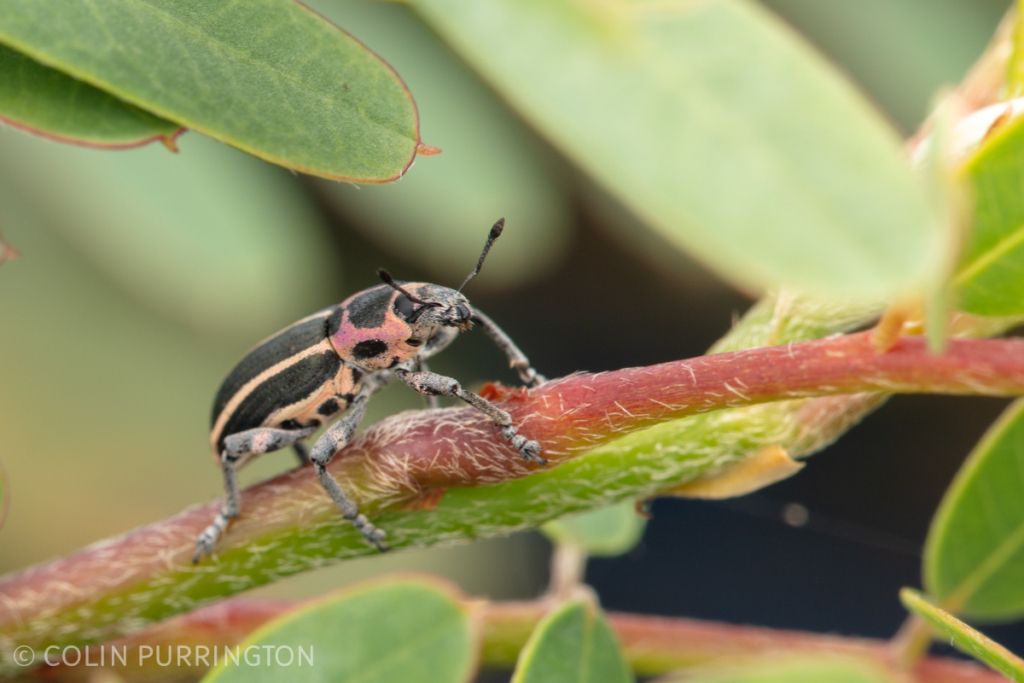
Eudiagogus maryae on scarlet sesbane (Sesbania punicea). Members of the genus are known as Sesbania clown weevils, appropriately. The larvae eat Sesbania, too.

Immature Surinam cockroach (Pycnoscelus surinamensis). Parthenogenetic, apparently.

Assembly moth (Samea ecclesialis) on fern frond. Also called the stained-glass moth (hence the species name, I assume). Larvae eat Mexican clover (Richardia brasiliensis) but perhaps other plants as well (very little information available for such a common moth).
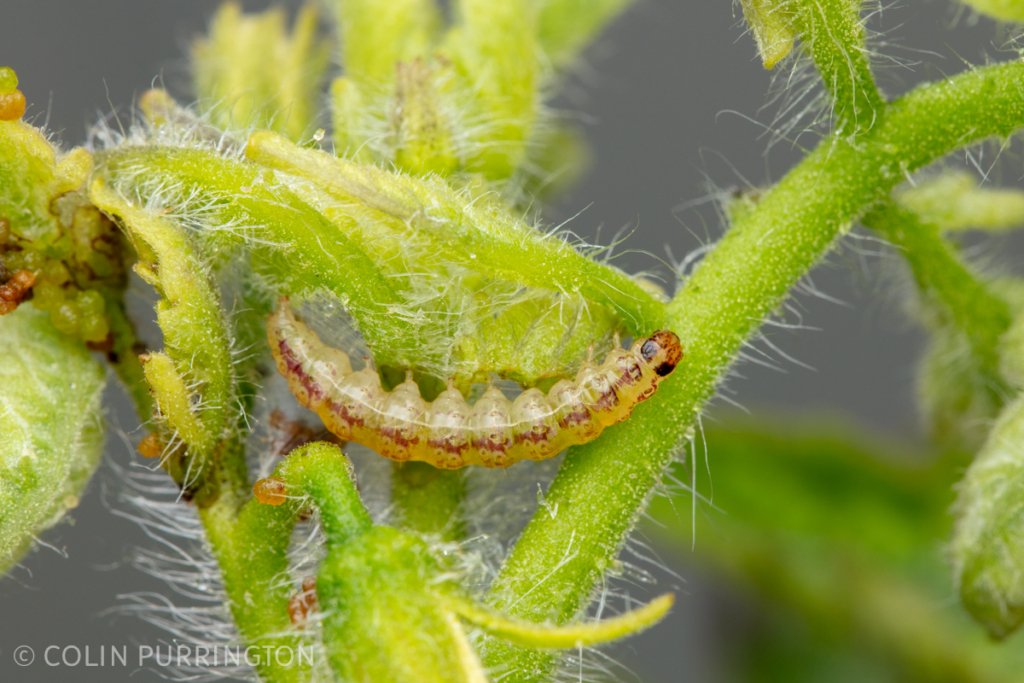
Eggplant webworm (Rhectocraspeda periusalis) on tomato. I spent a whole day identifying this. I’d assumed that any pest of tomato would be easy to identify, but I guess it’s rare to find it on tomato.
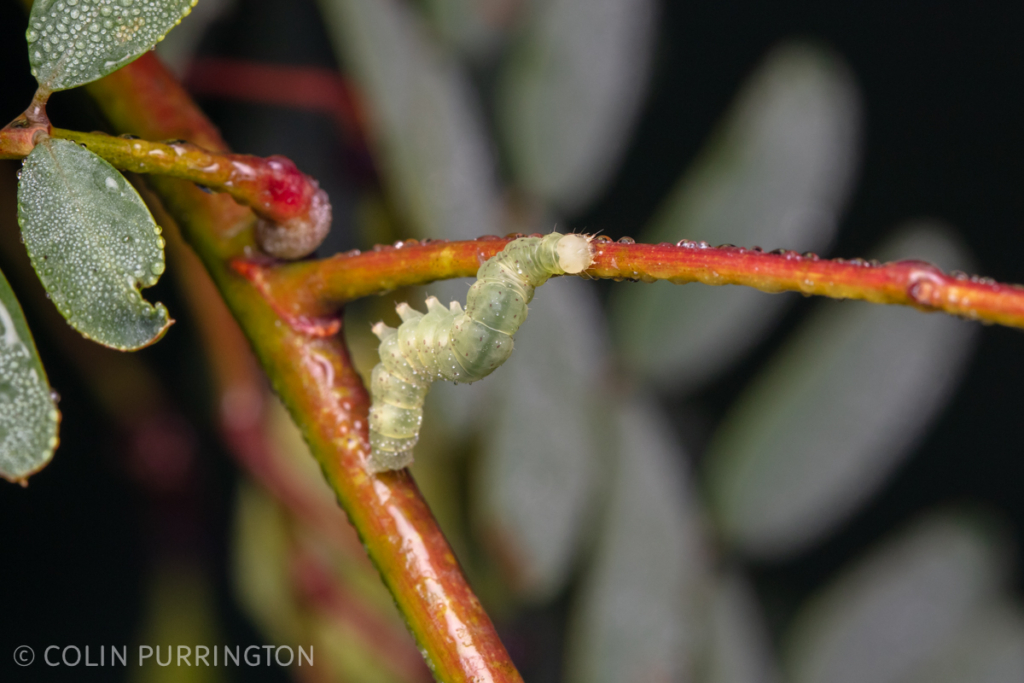
Graylet moth (Hyperstrotia sp.) larva on scarlet Sesbania (Sesbania punicea). ID is very tentative, however, and is just based on visual matches to similar caterpillars on BugGuide and in Wagner’s book. Here’s the iNaturalist observation.

For once, a caterpillar that was easy to identify: pale-edged Selenisa (Selenisa sueroides), on scarlet sesbane (Sesbania punicea). In searching for interesting natural history on this species I stumbled onto a paper by Bushwein et al. (1989) describing the larvae’s habit of chewing through flexible PVC tubing in citrus grove irrigation in search of a good place to pupate. The larvae even sealed off the holes they’d chewed, so I guess it was a good place. The authors estimated that some of the larvae travelled almost 5 meters to find such sites, which is pretty impressive. Anyway, if you have PVC irrigation in your citrus grove, make sure to get rid of suitable (Fabaceous) host plants.
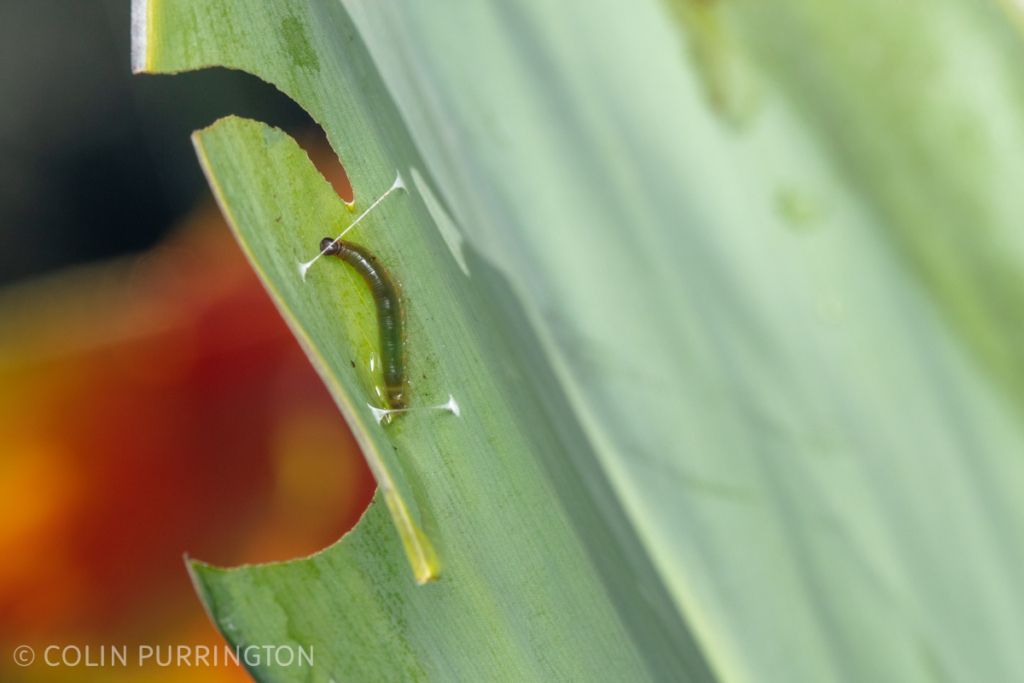
Caterpillar of Brazilian skipper (Calpodes ethlius) in the process of constructing its leaf-fold retreat on a canna lily (Canna sp.). Here’s a closeup of an older larva (after I separated the leaf folds). The BugGuide information page says that the larvae can forcefully eject frass, perhaps as predator deterrent. Always a nice trick.
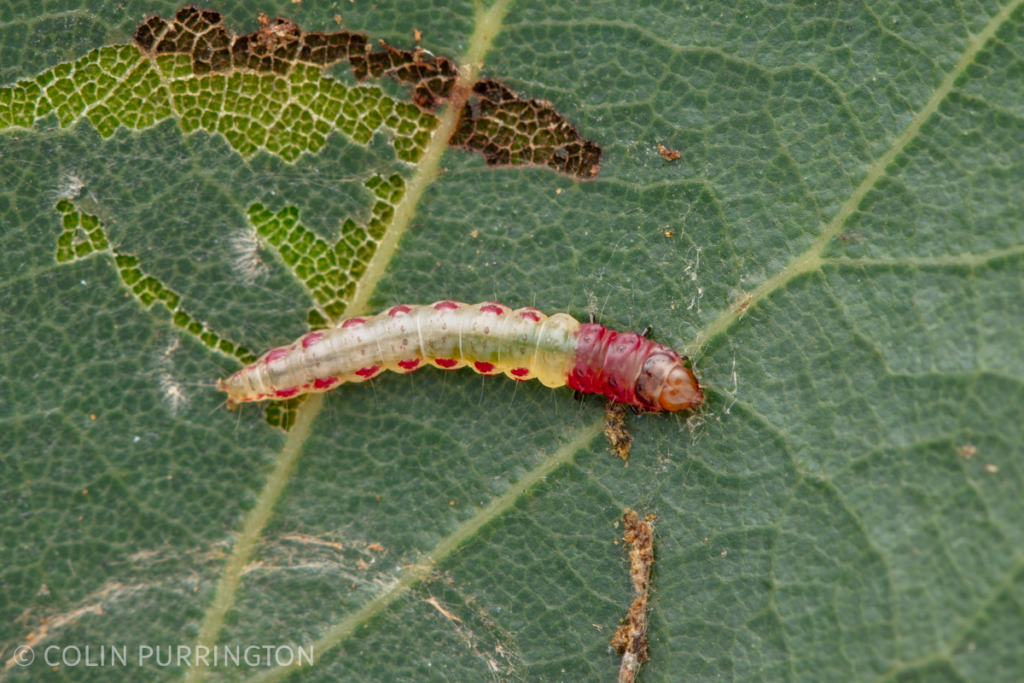
Larva of yellow-vested moth (Rectiostoma xanthobasis) found hidden in between two oak leaves tied together with silk. Unlike many moths, the common name here is spot-on descriptive and worth a look. There’s a nice description of this species on page 47 of Marquis et al. 2019.
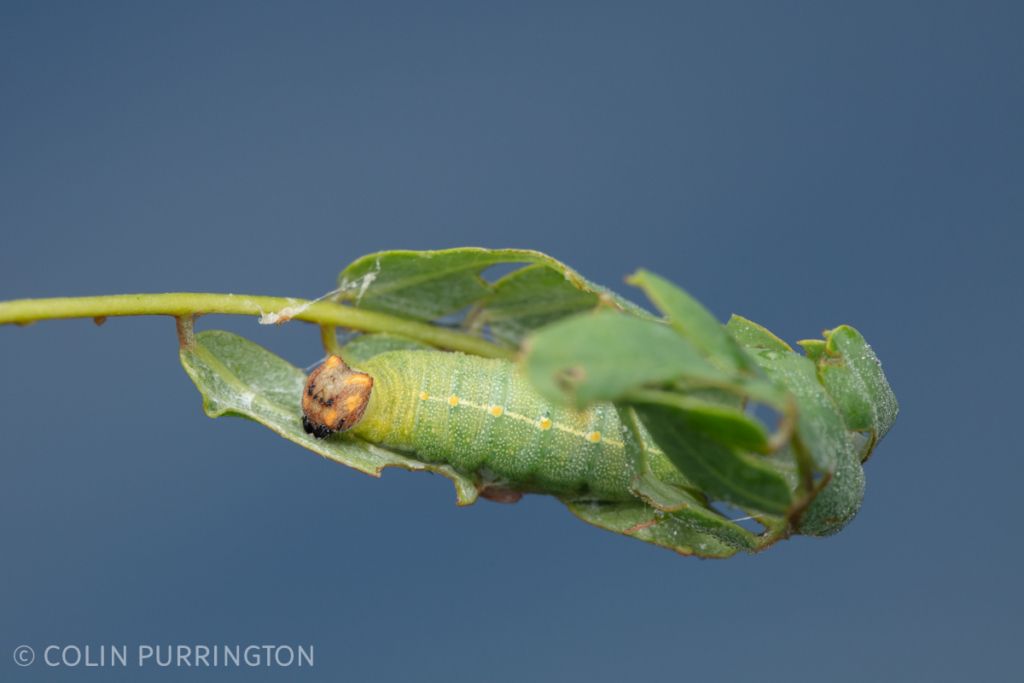
Caterpillar of Zarucco duskywing (Erynnis zarucco) on scarlet sesban. NB: I opened up its retreat a bit to get a photograph. Here’s the photograph before.

Caterpillar in retreat constructed on scarlet Sesbania (Sesbania punicea). I’m stumped by this one, however. Possibly in the Family Tortricidae. I’ve photographed it before, and both observations are on iNaturalist … in case you can help ID it. Here’s a photograph of the retreat before I opened it up. Yes, I really enjoy opening up retreats to see who’s living there; so many caterpillars go unnoticed unless you do that.
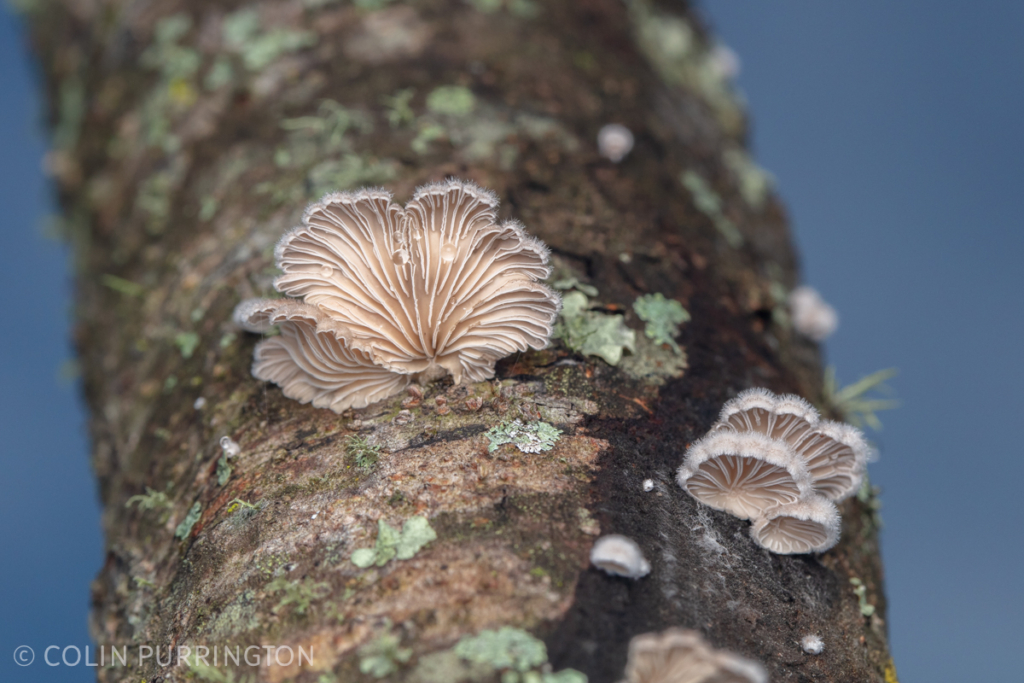
Splitgill mushrooms (Schizophyllum commune) growing on dead tree. Common but always beautiful when hydrated.
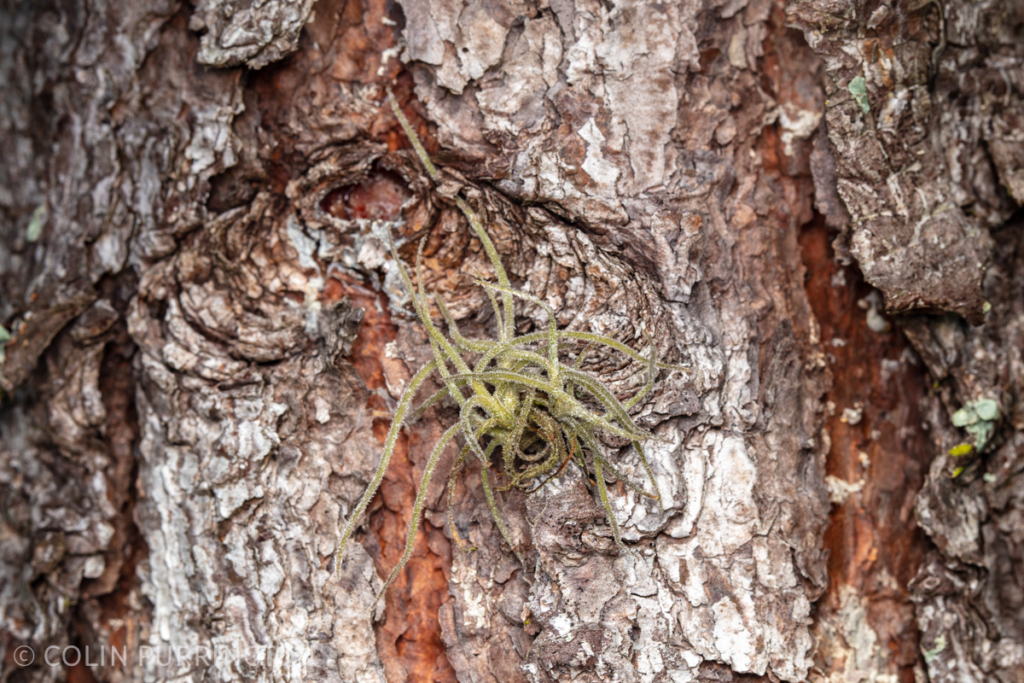
Small ball moss (Tillandsia recurvata) on trunk of a pine tree. It grows on everything, even on exposed power lines. Part of their trick is the silvery trichomes that capture water and funnel it into the plant.
In the unlikely event you’d like to see even more photographs from Zolfo Springs, please see my SmugMug site.

